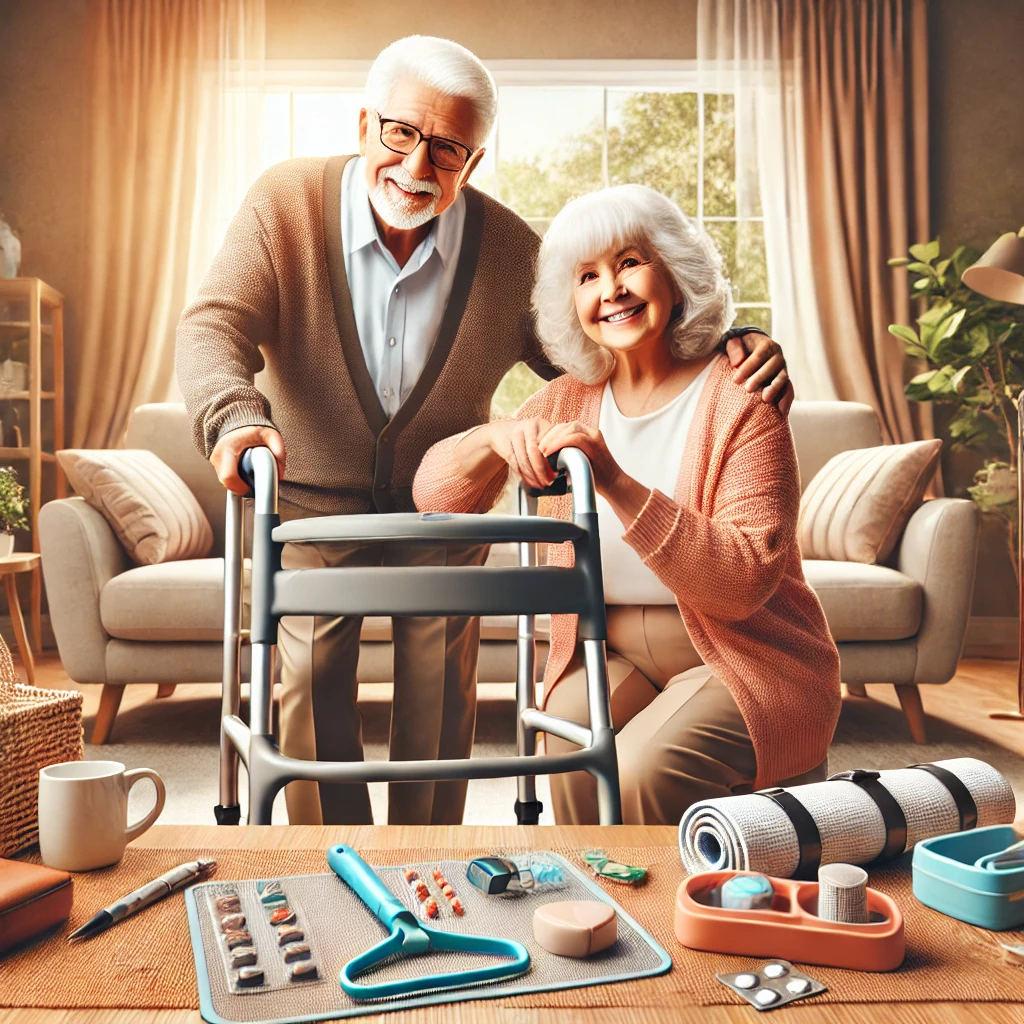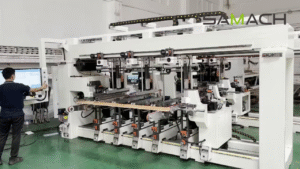
As adults age, maintaining independence becomes one of the key priorities. Many seniors wish to continue living in their own homes and carry out everyday activities without needing to rely heavily on family members or caregivers. However, as age progresses, mobility and physical abilities often decline, making it difficult to perform routine tasks. That’s where living aids come in. These tools, devices, and modifications are designed to help aging adults live safely, comfortably, and independently for as long as possible.
We will explore some of the most effective living aids for Seniors that can significantly enhance the safety and independence of aging adults. From mobility aids to smart home technology, these solutions can make life easier and safer for seniors as they continue to navigate their daily routines.
1. Mobility Aids for Enhanced Movement
One of the most common challenges aging adults face is a decline in mobility. Whether it’s difficulty walking, maintaining balance, or managing stairs, mobility aids can provide the support seniors need to stay active and independent.
Walkers and Rollators:
Walkers and rollators are some of the most popular mobility aids for seniors. A traditional walker provides stability while walking, and it can be especially helpful for seniors with limited balance. A rollator, on the other hand, is a walker with wheels that makes it easier to move around, as well as offering a seat to rest when needed. Many rollators also come equipped with baskets for carrying personal items.
Canes and Quad Canes:
For those who need a little extra support but don’t require a walker, a cane can be a simple yet effective solution. A quad cane, which has a wider base and four legs, offers more stability than a standard cane, making it a great option for those who need more support but prefer a lightweight option.
Wheelchairs and Power Chairs:
For seniors with more significant mobility challenges, wheelchairs—either manual or electric—can make a huge difference. Manual wheelchairs are self-propelled by the user or a caregiver, while power chairs are battery-operated and allow the user to move with ease, even if they have limited upper body strength. Both options can give seniors more control over their movement, helping them remain independent at home and in public spaces.
Lift Chairs:
A lift chair is an electrically powered recliner that helps seniors sit down or stand up with ease. It’s particularly helpful for those with arthritis, joint pain, or other physical limitations. The chair slowly reclines and then raises back up, providing gentle support during the transition. Lift chairs are a comfortable, safe, and functional living aid for seniors, ensuring they don’t strain themselves when moving between sitting and standing positions.
2. Home Modifications for Safety
Home safety is a major concern for seniors, particularly in preventing falls and accidents. As physical abilities decrease, certain modifications can help eliminate hazards and provide more confidence while moving around the home.
Grab Bars:
Installing grab bars in critical areas like bathrooms, near toilets, and in the shower is one of the most effective ways to increase safety. These bars provide support and stability when seniors are getting in and out of the shower or using the toilet. They can prevent dangerous falls and make activities like bathing much safer.
Non-Slip Flooring:
Slippery floors can be a major hazard for seniors, especially in kitchens and bathrooms. Installing non-slip rugs, mats, or even non-slip vinyl flooring can reduce the risk of falls. Bathroom floors should be particularly well-equipped with non-slip features to prevent accidents in wet environments.
Stairlifts:
For seniors with mobility challenges who live in multi-story homes, stairlifts are an excellent solution. A stairlift consists of a chair that moves along a rail, allowing seniors to safely navigate stairs without having to worry about falling. Stairlifts can be installed inside or outside, depending on the home’s design, and provide an invaluable aid for maintaining independence in multi-level homes.
Elevated Toilet Seats:
To make using the bathroom easier and safer, seniors can benefit from elevated toilet seats. These are added to regular toilets to raise the seat height, which reduces the strain on joints when sitting down or standing up. Many elevated toilet seats also come with armrests for added stability.
3. Assistive Technology for Seniors
With the advent of smart home technology, many seniors are now able to use digital tools that make their homes safer and more efficient. Assistive technology can help seniors monitor their health, communicate with others, and even control their environment from the comfort of their own home.
Medical Alert Systems:
Medical alert systems are essential for seniors who live alone or spend a lot of time by themselves. These systems typically consist of a wearable pendant or bracelet that can be pressed in the event of an emergency, alerting a monitoring center that sends help immediately. Many systems also come with fall detection technology, so help can be summoned even if the senior is unable to press the button themselves.
Smart Home Devices:
Smart home technology, such as voice-activated assistants like Amazon Alexa or Google Assistant, can be a game-changer for seniors. These devices can control lights, temperature, security systems, and more, all through voice commands. For seniors with limited mobility, voice-activated controls allow them to interact with their home environment without needing to physically move. Additionally, smart devices can remind seniors to take medications, drink water, or complete daily tasks, ensuring they stay on top of their health and routine.
Medication Management Tools:
As seniors often take multiple medications, keeping track of doses and schedules can be overwhelming. Medication management tools, such as automated pill dispensers, can help prevent missed doses and accidental overdoses. These tools often have built-in alarms or notifications to remind seniors when it’s time to take their medication, ensuring they stay healthy and compliant with their treatment plans.
Fall Detection Technology:
Many medical alert systems now include fall detection technology, which can automatically detect if a senior has fallen and send an alert to emergency services or family members. This technology provides peace of mind, especially for seniors with balance problems or those who live alone.
4. Cognitive Aids for Mental Clarity
For seniors experiencing cognitive decline or conditions like dementia, cognitive aids can help keep them engaged and provide safety and support.
Memory Aids and Planners:
Memory aids, such as electronic calendars, medication reminders, and digital photo frames that display names and events, can be helpful for seniors with memory loss. These devices offer visual and auditory cues that support memory and help seniors stay organized throughout the day.
Cognitive Stimulation Apps:
There are numerous apps and online programs designed to help seniors with cognitive decline keep their minds sharp. These apps offer brain games, puzzles, and exercises designed to improve memory, attention, and problem-solving skills. Engaging in mental stimulation can help slow cognitive decline and promote better overall brain health.
5. Personalized Aids for Everyday Tasks
Aside from mobility and safety, seniors also benefit from everyday aids that make routine tasks easier to perform.
Reachers and Grabbers:
Seniors who have difficulty bending down or stretching can use reachers or grabbers to pick up items from the floor or high shelves. These simple tools extend a person’s reach, allowing them to avoid straining their back or joints. They’re especially useful in kitchens and bathrooms, where seniors may need to reach for heavy or high items.
Adaptive Kitchen Tools:
Cooking and meal preparation can become challenging for aging adults with arthritis or limited dexterity. Adaptive kitchen tools, such as ergonomically designed knives, openers, and peelers, can help seniors prepare meals safely and with less effort. Non-slip mats and utensils with larger handles can also be beneficial for those with arthritis.
Assistive Dressing Aids:
Dressing can be a daunting task for seniors with limited mobility or arthritis. Assistive dressing aids like button hooks, sock aids, and long-handled shoehorns can make getting dressed much easier. These tools reduce the need for bending or reaching, allowing seniors to maintain a sense of independence in their daily routines.
Conclusion
Living aids for seniors have the potential to dramatically improve quality of life, independence, and safety. From mobility aids like walkers and canes to advanced smart technology that can control home systems, these tools offer essential support for aging adults who want to live comfortably in their homes.
By investing in the right living aids, seniors can maintain their autonomy and enjoy a higher level of comfort and safety as they age. Whether it’s modifying their living environment or using assistive devices for everyday tasks, the right tools can help seniors preserve their independence while minimizing risks and ensuring peace of mind for both them and their families.





